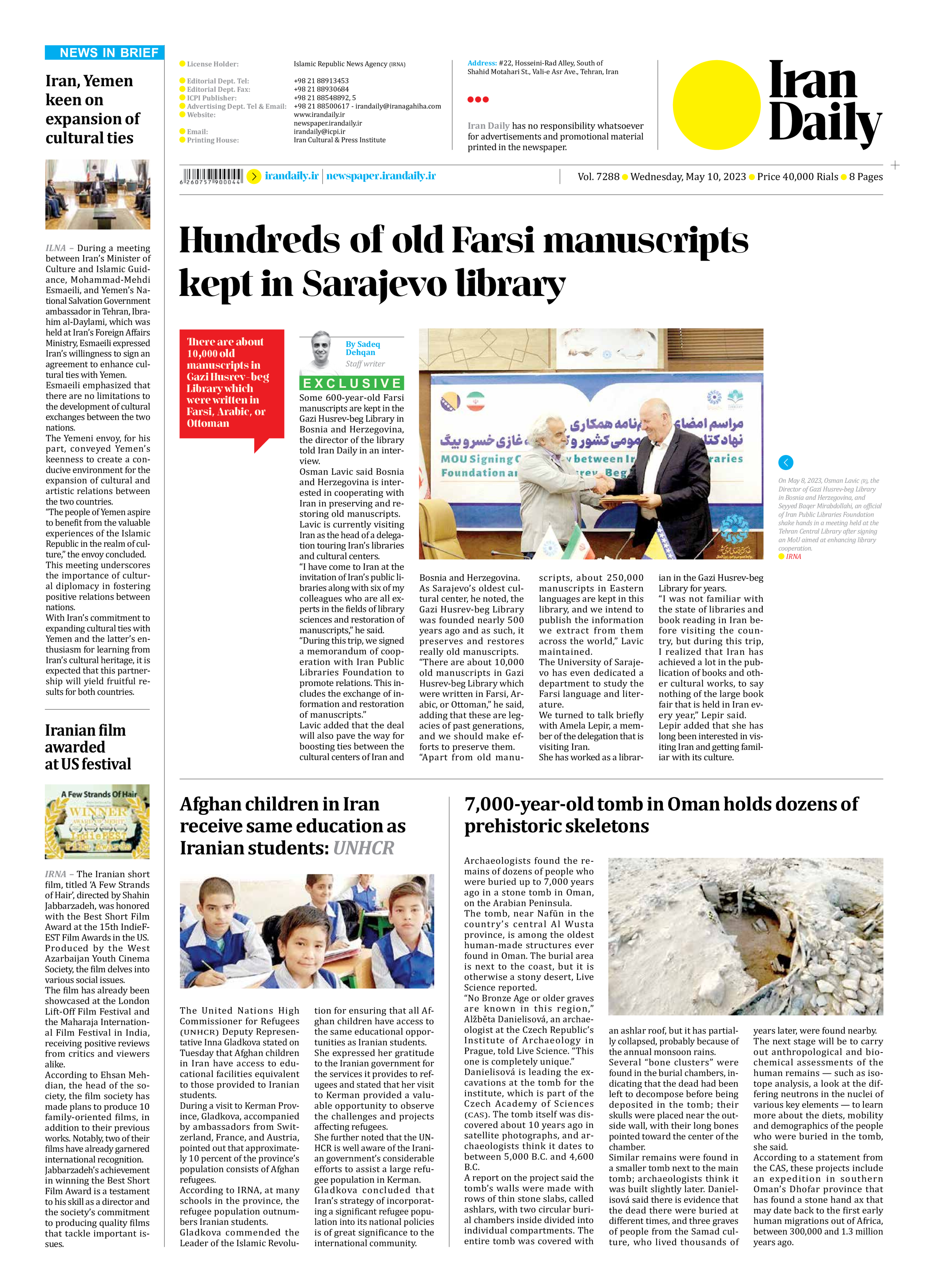
7,000-year-old tomb in Oman holds dozens of prehistoric skeletons
Archaeologists found the remains of dozens of people who were buried up to 7,000 years ago in a stone tomb in Oman, on the Arabian Peninsula.
The tomb, near Nafūn in the country’s central Al Wusta province, is among the oldest human-made structures ever found in Oman. The burial area is next to the coast, but it is otherwise a stony desert, Live Science reported.
“No Bronze Age or older graves are known in this region,” Alžběta Danielisová, an archaeologist at the Czech Republic’s Institute of Archaeology in Prague, told Live Science. “This one is completely unique.”
Danielisová is leading the excavations at the tomb for the institute, which is part of the Czech Academy of Sciences (CAS). The tomb itself was discovered about 10 years ago in satellite photographs, and archaeologists think it dates to between 5,000 B.C. and 4,600 B.C.
A report on the project said the tomb’s walls were made with rows of thin stone slabs, called ashlars, with two circular burial chambers inside divided into individual compartments. The entire tomb was covered with an ashlar roof, but it has partially collapsed, probably because of the annual monsoon rains.
Several “bone clusters” were found in the burial chambers, indicating that the dead had been left to decompose before being deposited in the tomb; their skulls were placed near the outside wall, with their long bones pointed toward the center of the chamber.
Similar remains were found in a smaller tomb next to the main tomb; archaeologists think it was built slightly later. Danielisová said there is evidence that the dead there were buried at different times, and three graves of people from the Samad culture, who lived thousands of years later, were found nearby.
The next stage will be to carry out anthropological and biochemical assessments of the human remains — such as isotope analysis, a look at the differing neutrons in the nuclei of various key elements — to learn more about the diets, mobility and demographics of the people who were buried in the tomb, she said.
According to a statement from the CAS, these projects include an expedition in southern Oman’s Dhofar province that has found a stone hand ax that may date back to the first early human migrations out of Africa, between 300,000 and 1.3 million years ago.







